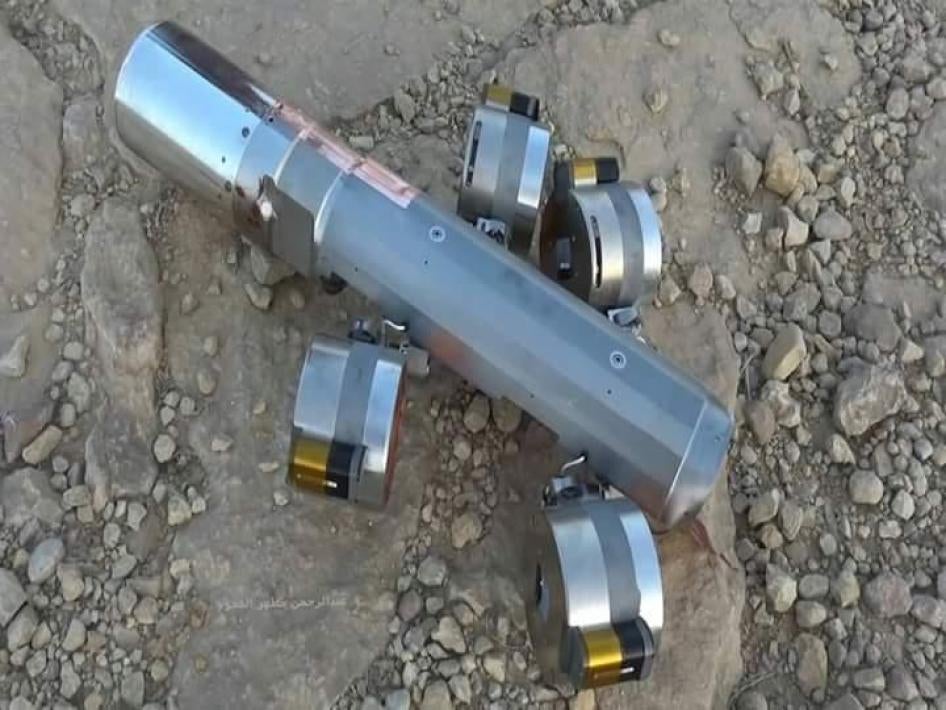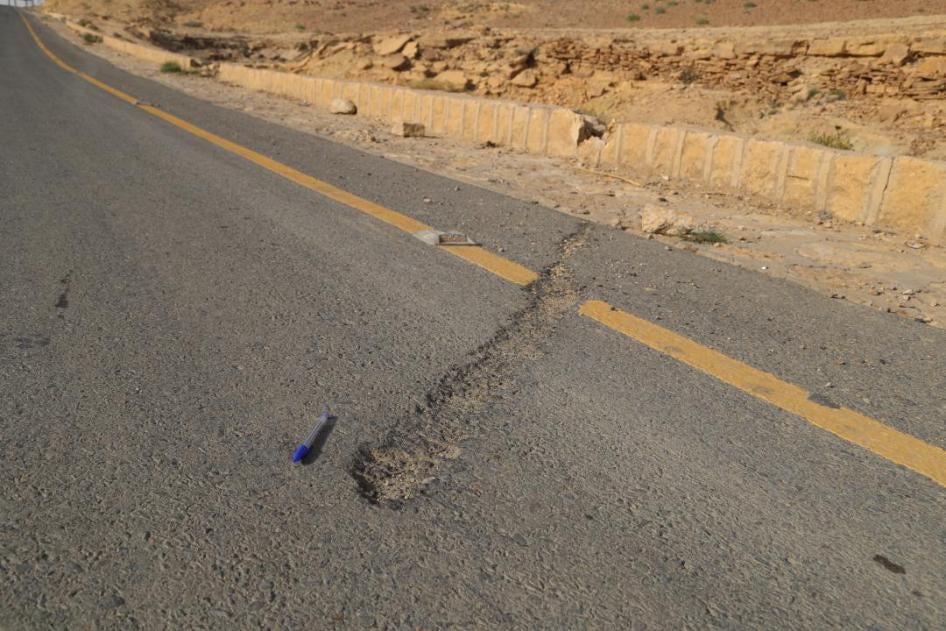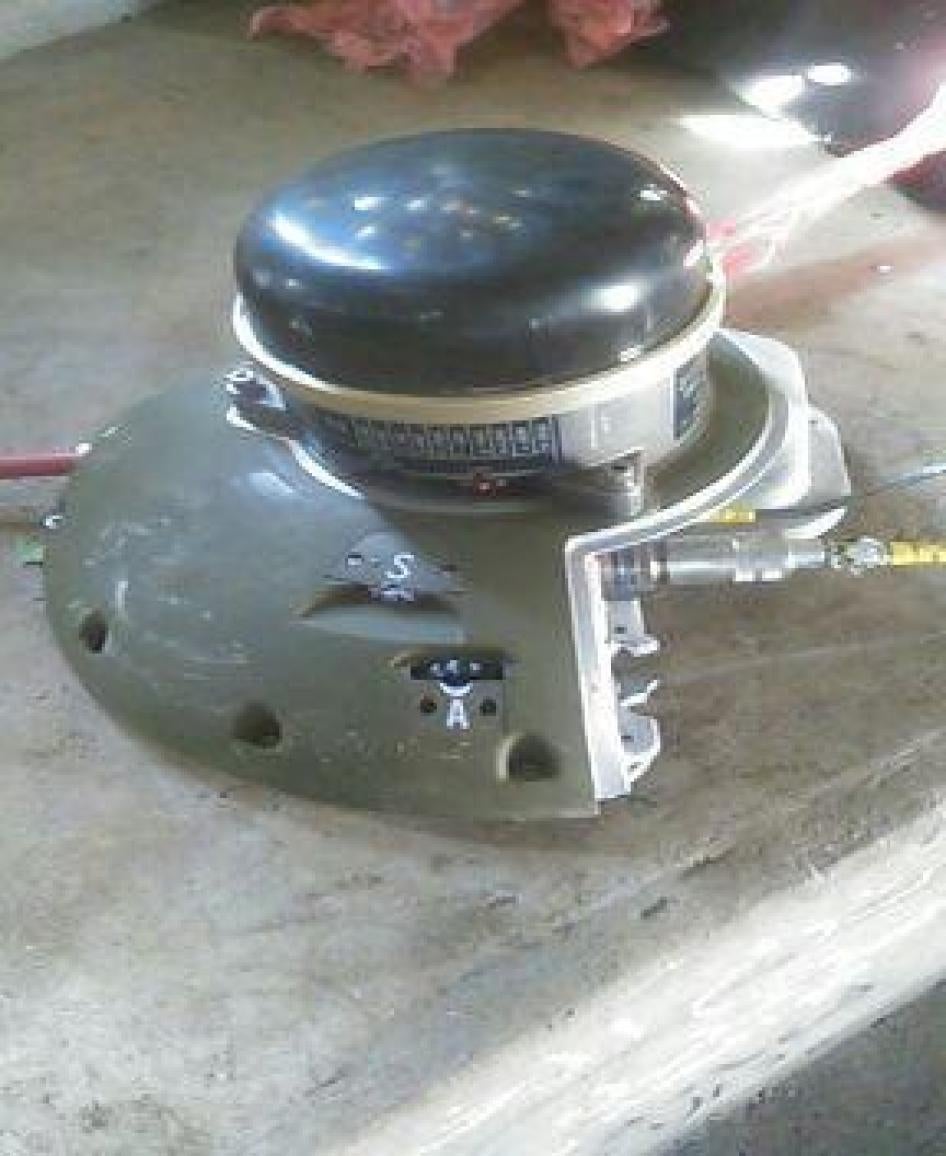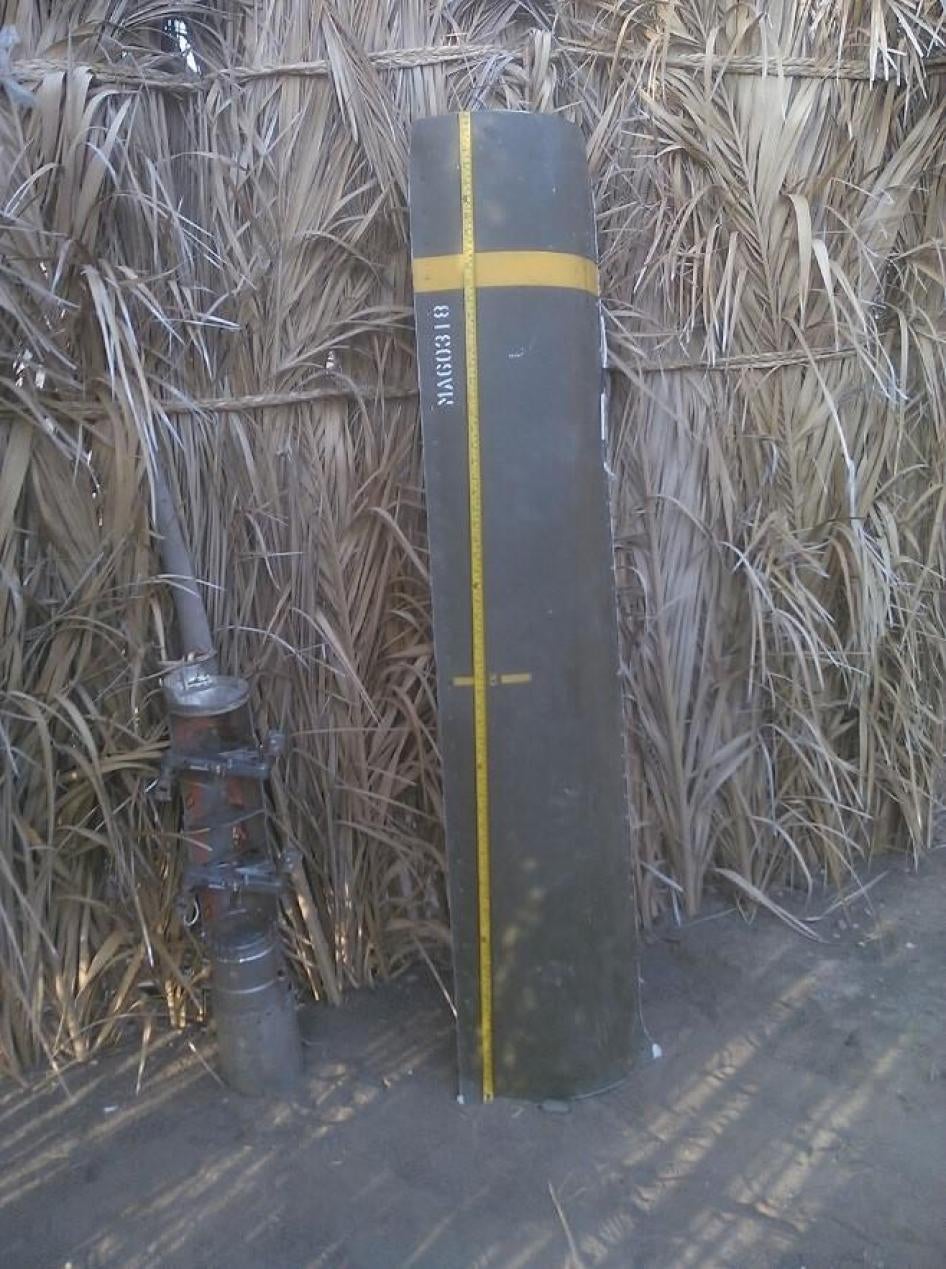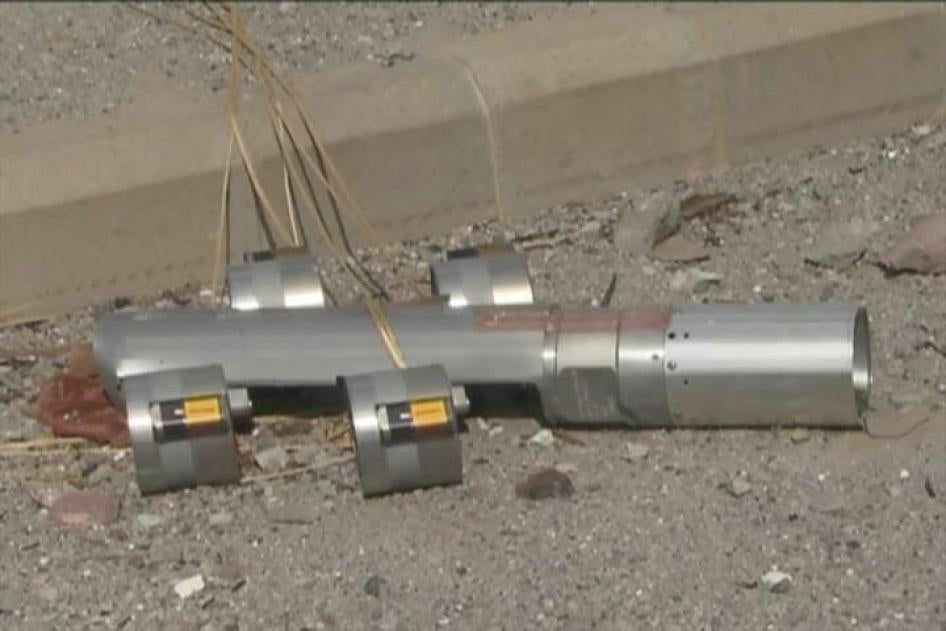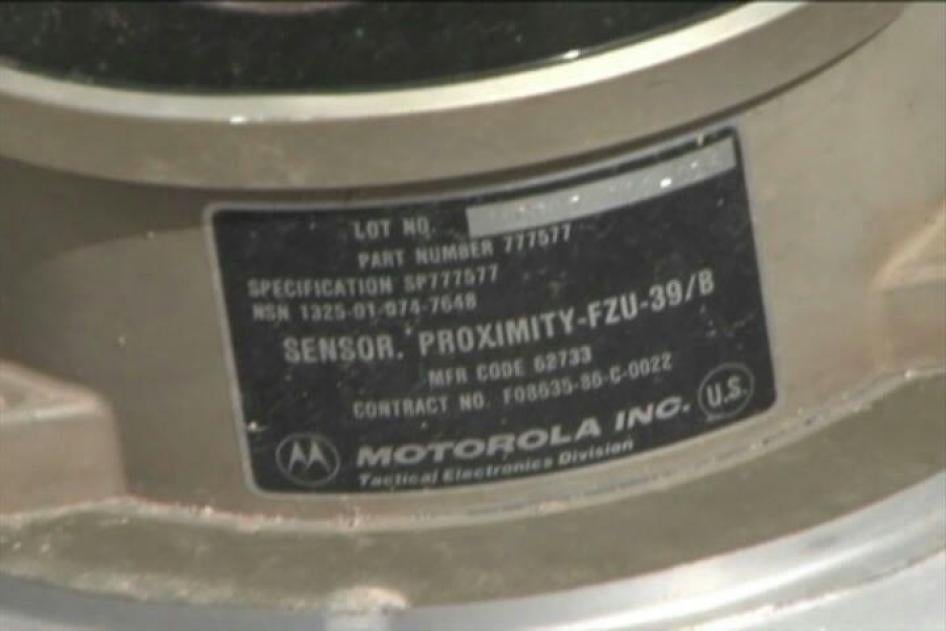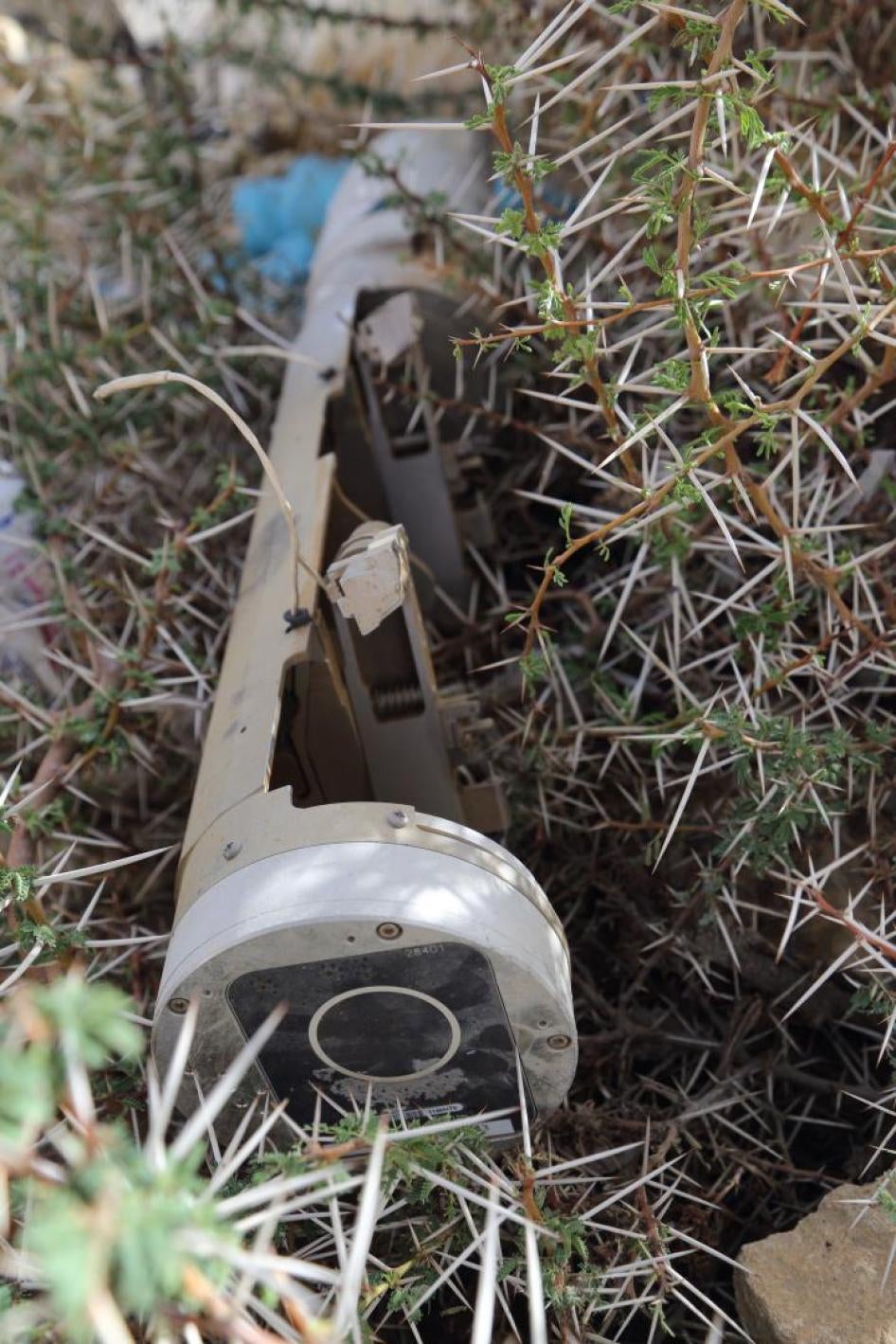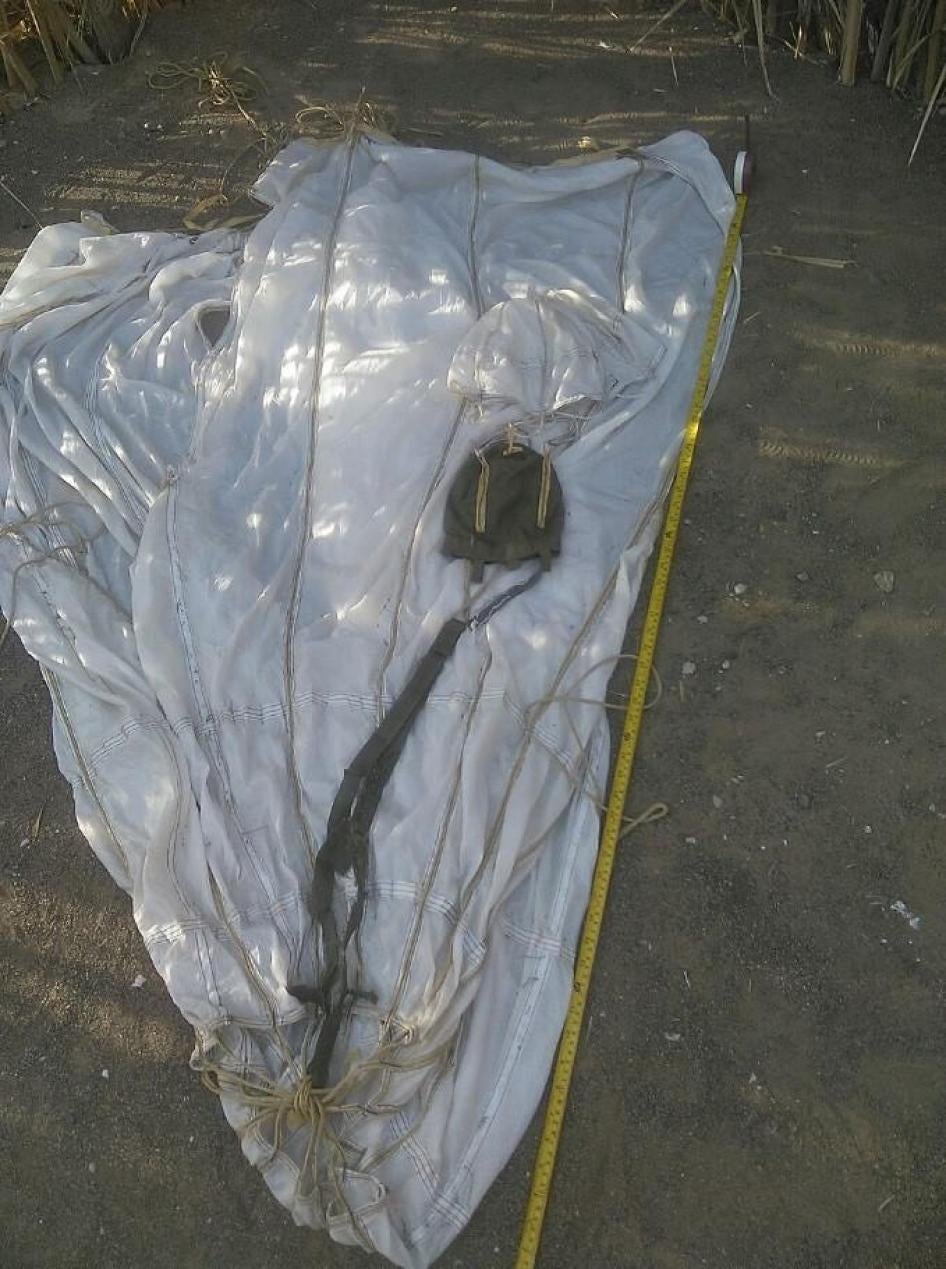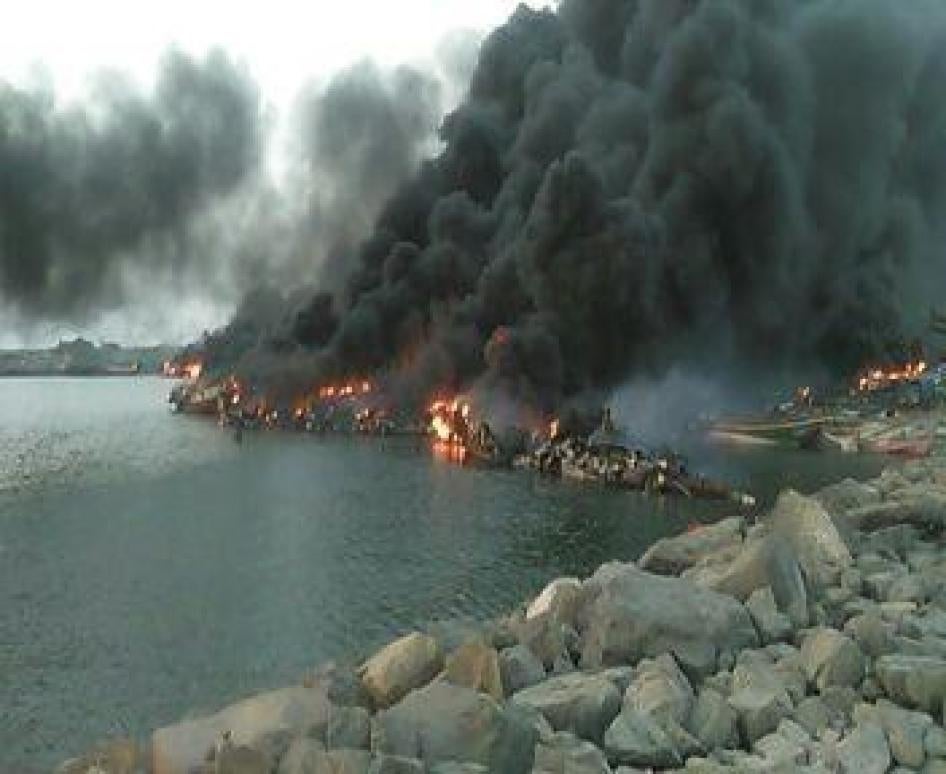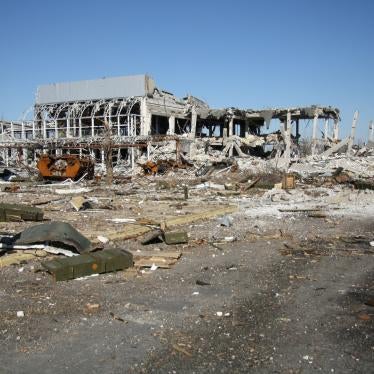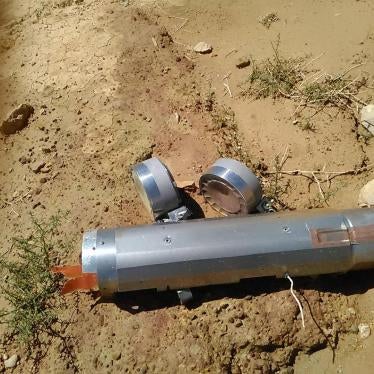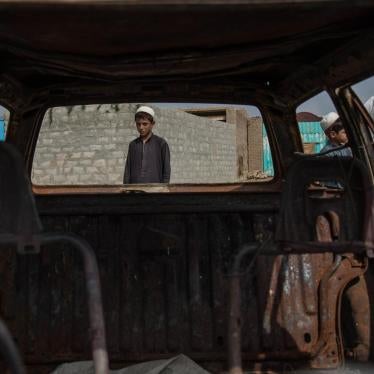(Beirut) – The Saudi Arabia-led coalition is using internationally banned cluster munitions supplied by the United States in Yemen despite evidence of civilian casualties, Human Rights Watch said today. Recently transferred US-manufactured cluster munitions are being used in civilian areas contrary to US export requirements and also appear to be failing to meet the reliability standard required for US export of the weapons.
“Saudi Arabia and its coalition partners, as well as their US supplier, are blatantly disregarding the global standard that says cluster munitions should never be used under any circumstances,” said Steve Goose, arms director at Human Rights Watch and chair of the international Cluster Munition Coalition. “The Saudi-led coalition should investigate evidence that civilians are being harmed in these attacks and immediately stop using them.”
Since March 26, 2015, a Saudi-led coalition of nations has been conducting a military operation in Yemen against Houthi forces, also known as Ansar Allah. Field research by Human Rights Watch, Amnesty International, and the United Nations; interviews with witnesses and victims; and photographs and video evidence confirm that the Saudi-led coalition is using cluster munitions in Yemen.
Cluster munitions are delivered from the ground by artillery and rockets, or dropped from aircraft and contain multiple smaller submunitions that spread out over a wide area. A total of 118 countries have banned cluster munitions due to the threat they pose to nearby civilians at the time of attack and afterward. The submunitions often fail to explode and pose a threat until cleared and destroyed. Yemen, the US, and Saudi Arabia and its coalition members should join the 2008 Convention on Cluster Munitions, Human Rights Watch said.
Human Rights Watch believes the Saudi Arabia-led coalition of states operating in Yemen is responsible for all or nearly all of these cluster munition attacks because it is the only entity operating aircraft or multibarrel rocket launchers capable of delivering five of the six types of cluster munitions that have been used in the conflict.
One type of air-dropped cluster munition used by the Saudi-led coalition in Yemen is the CBU-105 Sensor Fuzed Weapon, manufactured by Textron Systems Corporation of Wilmington, Massachuetts. Human Rights Watch has investigated at least five attacks involving the use of CBU-105 Sensor Fuzed Weapons in four governorates since March 2015.
Most recently, CBU-105 Sensor Fuzed Weapons were used in a December 12, 2015 attack on the Yemeni port town of Hodaida, injuring a woman and two children in their homes. At least two civilians were wounded when CBU-105 Sensor Fuzed Weapons were used near al-Amar village in Saada governorate on April 27, 2015, according to local residents and medical staff. More information on these and other cluster munition attacks is provided below.
While any use of any type of cluster munition should be condemned, there are two additional disturbing aspects to the use of CBU-105 Sensor Fuzed Weapons in Yemen. First, US export law prohibits recipients of cluster munitions from using them in populated areas, as the Saudi coalition has clearly been doing. Second, US export law only allows the transfer of cluster munitions with a failure rate of less than 1 percent. But it appears that Sensor Fuzed Weapons used in Yemen are not functioning in ways that meet that reliability standard.
In recent years, the US has supplied these weapons to Saudi Arabia and the United Arab Emirates (UAE), both of which possess attack aircraft of US and Western/NATO origin capable of delivering them. CBU-105 Sensor Fuzed Weapons are the only cluster munitions currently exported by the US, and the recipient must agree not to use them in civilian areas. According to the US government, CBU-105 Sensor Fuzed Weapons are the only cluster munition in its active inventory “that meet[s] our stringent requirements for unexploded ordnance rates,” with a claimed failure rate of less than 1 percent.
I was with six friends from the village … sitting on a small hill watching the strikes. We suddenly saw about 20 white parachutes in the air, falling toward the port. Less than a minute later, each one released a cloud of black smoke as it neared the ground and exploded. It looked like a series of multiple bombs all next to each other. Less than 5 minutes later, it happened again, another bomb let out a group of about 20 parachutes and the same thing happened. But because of the direction the wind was blowing, the parachutes suddenly started falling toward our village.
Hussein Saed, 42, said he watched four parachutes fall toward the village and “as each parachute came close to the ground, it would explode like fireworks, and release bombs.”
He said that one munition hit the wall of his brother Ali Saed’s home, breaking a window just below. Metal fragments flew into the room, wounding Ali Saed’s wife, Aziza Ahmad Ahdab, 42, and their daughter Salama, 4. Doctors had to amputate Ahdab’s lower right leg. Saed said that another munition landed in the yard of his other brother, Hassan Saed, and exploded next to the bathroom, but that no one was wounded.
A doctor at a local health clinic said that he treated Homadi Hassan Muliked, 15, who was wounded in his abdomen by another munition in the same attack. Muliked said that he quickly lay down on the floor in his house when he heard the explosions, but “suddenly I felt a pain in the lower right side of my abdomen. I looked down and saw blood. I didn’t know what happened or how, but later I saw the damage to our house. One of the bombs had hit our wall and exploded.”
One munition hit the home of Muhammad Zeid Ahmad, 50:
Something hit the wall and broke through it. I immediately hit the floor. This strange object landed about five meters from me. It looked like a small silver model of a rocket. I was very afraid, I tried to crawl away and escape because I knew it could explode at any moment. It looked very scary. But as I moved, it moved with me, not toward me, but in the same direction, in slow motion it seemed. … This went on for about a minute and then it exploded. Luckily I was not seriously wounded.
Another witness also said it seemed that a weapon followed him. While it is not possible for these weapons to detect human targets, the skeet, or submunitions, are released in all directions.
Amran governorate, June 29, 2015
According to a report by Amnesty International, CBU-105 Sensor Fuzed Weapons were used in an attack on Harf Sofian in Amran governorate, south of Saada, that locals said occurred on June 29. Amnesty International researchers visiting the area on July 6 found and photographed the remnants of an empty BLU-108 canister.
Sanhan, Sanaa governorate, May 21, 2015
Human Rights Watch received photographs and collected witness accounts that indicate CBU-105 Sensor Fuzed Weapons were used in an attack on the Affash Historic Fort in Sanhan, Sanaa governorate, about 20 kilometers south of Sanaa City, on May 21.
The fort is in the village of Bait al-Ahmar, which has approximately 460 inhabitants, where former Yemeni President Ali Abdullah Saleh, a key supporter of the Houthis in the current conflict, owns a house. A guard at the fort, Nagi Abdullah al-Gahshi, said that the closest military base is 20 to 25 kilometers away, at Raymet Humaid military camp.
Ali Mohsen Maqula, a guard for the past four years at the Affash Historic Fort’s housing compound and member of the Republican Guard, told Human Rights Watch that he witnessed a cluster munition attack. Yemen’s Republican Guard is a military unit that was commanded by former President Saleh’s son, Ahmed Ali Saleh.
Maqula said he was on a hill a kilometer from the fort at about 7 p.m. on May 21, when he saw a series of about 12 explosions. “I remember the explosions in the sky, they looked like big bright red fireworks, the color of lava,” he said. It was too dark to see anything else, he said. He said that 10 guards at the compound were wounded in the attack, but that Saleh was not there at the time.
Maqula left but returned to the village a week later and saw the remnants in the compound of BLU-108 canisters with their parachutes still attached, as well as at least 20 unexploded skeet, or submunitions. Two weeks later, a team of military engineers arrived and destroyed the submunitions near the gate of the compound by detonating them, but did not touch the rest, he said.
In September 2015, Abdullah Abu Hurriya, a politician from former President Saleh’s General People’s Congress Party, hired Muhammad Ahmad al-Nahmi, a freelance photographer, to photograph the submunitions. Al-Nahmi told Human Rights Watch that he traveled to the village and saw at least eight BLU-108 canisters in the fort, and another three next to the compound’s mosque. Abu Hurriya provided copies of the photos to Human Rights Watch that show the remnants of a CBU-105 Sensor Fuzed Weapon, including a BLU-108 canister with all four skeets or submunitions still attached, indicated it failed to function.
Maqula said that the local sheikh of the village, Muhammad Mohsen, warned residents to leave on May 19 after three bombs – not cluster munitions – hit the compound at around 11:30 a.m., wounding al-Gahshi and three other guards. Maqula said that those who lived closest to the compound walls left, but about 200 residents living 500 meters or further from the compound stayed. He said that after the May 21 attack, the remaining civilians fled. Since then, there have been four more attacks on the compound – one in September and three in October – but none with cluster munitions.
Al-Amar, Saada governorate, April 27, 2015
A Sanaa-based activist provided Human Rights Watch with photographs that he said were taken by a resident of Saada governorate at the site of an April 27 airstrike by the Saudi-led coalition in the al-Amar area of al-Safraa, 35 kilometers south of the northern Houthi stronghold of Saada city. The photographs show a BLU-108 canister with four skeet, or submunitions, still attached, indicating it failed to function, and another empty BLU-108.
Local residents and medical staff said the CBU-105 Sensor Fuzed Weapons used outside al-Amar village on April 27, wounded two or three people. One witness said that one of the wounded was a fighter while others, including medical staff in two hospitals, said that at least two were civilians.
In May, locals showed Human Rights Watch the remnants of two BLU-108 canisters and the place where they were found by near the main road between Sanaa and Saada, about 100 meters south of al-Amar. One canister still contained a submunition, while the other was empty. Human Rights Watch found a third empty canister in bushes nearby. Researchers identified six small craters in the asphalt at the attack site that are consistent with craters created by the explosive submunitions released from BLU-108 canisters.
Ayid Muhammad Haydar, 37, a resident, said that he heard an airplane overhead around 11 a.m. on a Monday, the weekly village market day, in late April. He said that the sky filled with about 40 parachutes. He did not hear any explosions in the air, but said that he heard about 15 small explosions that sounded like hand grenades over the next two hours.
Local residents said that Saudi-led coalition aircraft had carried out dozens of aerial attacks on April 27, apparently targeting the al-Safra military complex, housing the 72nd Military Brigade, two to three kilometers away, which Al-Amar residents described as the closest military installation to their village.
Al-Shaaf, Saada governorate, April 17, 2015
A video uploaded to YouTube on April 17 by the pro-Houthi September 21 YouTube channel shows numerous objects with parachutes slowly descending from the sky. The video zooms out to show a mid-air detonation and several black smoke clouds from other detonations. Human Rights Watch established the location, using satellite imagery analysis, as al-Shaaf in Saqeen, in the western part of Saada governorate. The munitions appeared to land on a cultivated plateau, within 600 meters of several dozen buildings in four to six village clusters.
US Transfer of the Weapons
The US Department of Defense concluded a contract with Textron Defense Systems for the manufacture of 1,300 CBU-105 Sensor Fuzed Weapons for Saudi Arabia in August 2013. The contract stipulated that the weapons were to be delivered by December 2015, but Human Rights Watch has not been able to determine if all cluster munitions have been delivered. The UAE received an unknown number of CBU-105 from Textron Defense Systems in June 2010, fulfilling a contract announced in November 2007. At the time that these two nations procured these weapons, each CBU-105 cost approximately $360,000.
Under a June 2008 policy directive issued by then-Secretary of Defense Robert Gates, the US can only export cluster munitions that “after arming do not result in more than 1 percent unexploded ordnance across the range of intended operational environments,” and the receiving country must agree that cluster munitions “will only be used against clearly defined military targets and will not be used where civilians are known to be present or in areas normally inhabited by civilians.”
This policy is most recently codified in Section 7054 (b) of the Consolidated and Continuing Appropriations Act (H.R. 83) of 2015. According to guidance issued by the US Defense Security Cooperation Agency in 2011, “the only cluster munition with a compliant submunition compliant with the reliability standard established by the Gates Policy is the CBU-97B/CBU-105 Sensor Fuzed Weapon.”
There is no evidence to indicate that CBU-105 Sensor Fuzed Weapons have been transferred to or stockpiled by the other countries participating in the Saudi-led coalition – Bahrain, Egypt, Jordan, Kuwait, Morocco, Qatar, and Sudan.
Saudi Arabia has denied using other types of cluster munitions in Yemen, but it has admitted to using CBU-105 Sensor Fuzed Weapons. In a January 11, 2016 interview with CNN, the Saudi military spokesperson said the coalition used CBU-105 Sensor Fuzed Weapons once, in Hajjah in April 2015, “but not indiscriminately.” He said that the CBU-105 has been used “against vehicles.”
The Saudi-led coalition may have used CBU-105 Sensor Fuzed Weapons in Hajjah in an attack on a vehicle on a mountain road between Amran and Hajjah city. In August 2015, several locals in the area told Human Rights Watch researchers that they had heard about a military truck with a family inside being hit by cluster munitions sometime between May and July. A local news outlet reported an incident meeting the same description on May 21.
While the CBU-105 is banned under the Convention on Cluster Munitions, its use is permitted under existing US policy and its export is permitted under the existing US export restrictions on cluster munitions.
The US has made few public statements in response to the use of cluster munitions in Yemen. According to State Department officials, the US is aware of “reports” of the “alleged” use of cluster munitions by the Saudi-led coalition. In an August 19 article, however, an unnamed Pentagon official was quoted as acknowledging that “the U.S. is aware that Saudi Arabia has used cluster munitions in Yemen.”
In July, US Representative Jim McGovern raised concern about the use of CBU-105 Sensor Fuzed Weapons in Yemen, stating: “If we have evidence that countries are not complying with US law that ought to be enough to say we sell these weapons to them no more. Period. End of story.” McGovern said the US should join the Convention on Cluster Munitions.
Before the Yemen conflict, the only known use of the Sensor Fuzed Weapon was by the US in Iraq in 2003, apparently on a very limited scale, but multiple failures called into question the claimed reliability rate of better than 99 percent.
In addition to the recent transfer of CBU-105, the US provided Saudi Arabia with significant exports of cluster bombs between 1970 and 1999. There is credible evidence that in November 2009, Saudi Arabia dropped cluster bombs in Yemen’s northern Saada governorate during fighting between the Houthis and the Yemeni and Saudi militaries.

